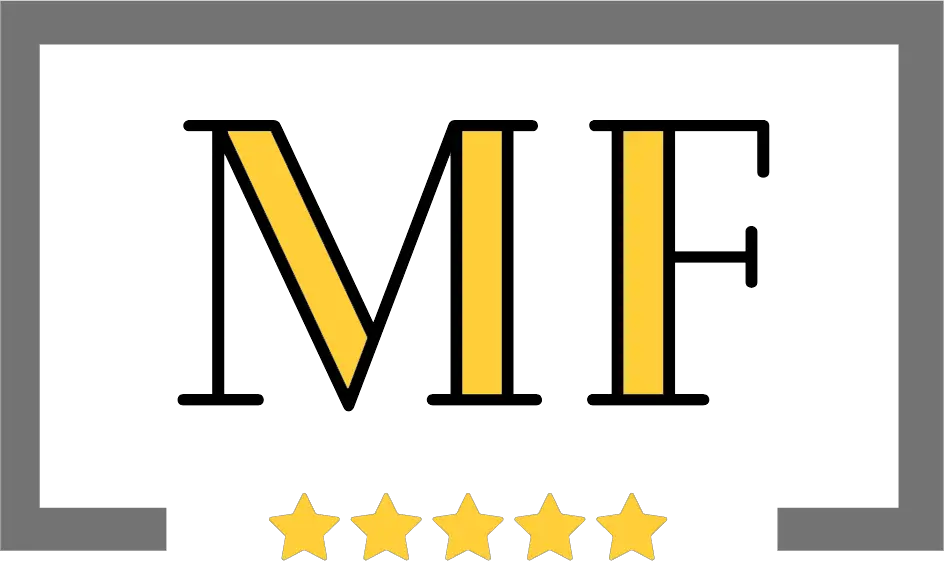Details
Introduction to Business Insurance
Business insurance is a critical component for any enterprise, regardless of its size or industry. It serves as a safeguard against a variety of potential risks, ensuring that businesses can continue to operate smoothly even in the face of unexpected challenges. The fundamental purpose of business insurance is to mitigate risks and protect assets, providing a financial safety net for businesses when they encounter unforeseen events such as natural disasters, lawsuits, or other liabilities.
At its core, business insurance is designed to cover a wide range of potential risks. The most common types of coverage include general liability insurance, which protects against claims of bodily injury or property damage; property insurance, which covers damage to physical assets like buildings and equipment; and professional liability insurance, which shields businesses from claims related to errors or negligence in the services they provide. Additionally, there are specialized policies tailored to specific industries and risks, such as cyber liability insurance for data breaches and workers’ compensation insurance for employee injuries.
In the modern business landscape, the importance of having adequate insurance coverage cannot be overstated. As businesses grow and evolve, they are exposed to a myriad of risks that can have significant financial implications. From natural disasters and theft to legal disputes and workplace accidents, the potential threats are numerous and varied. Business insurance helps to alleviate the financial burden associated with these risks, allowing businesses to focus on their core operations and long-term growth strategies.
Furthermore, business insurance is not just about protecting against external threats; it also plays a crucial role in maintaining the trust and confidence of stakeholders. Customers, investors, and partners are more likely to engage with a business that demonstrates a proactive approach to risk management. By securing comprehensive insurance coverage, businesses can not only protect their assets but also enhance their reputation and credibility in the market.
Types of Business Insurance Policies
When navigating the intricate landscape of business insurance, it is essential to understand the various types of business insurance policies available, each serving a distinct purpose to safeguard enterprises against potential risks. One of the most common forms is general liability insurance. This policy provides coverage for claims involving bodily injuries, property damage, and other liabilities arising from business operations. It is a foundational insurance that many businesses consider indispensable.
Property insurance is another critical policy, designed to protect a company’s physical assets. This insurance covers damage to buildings, equipment, inventory, and other tangible assets resulting from events like fire, theft, or natural disasters. For businesses heavily reliant on physical infrastructure, property insurance is vital to ensure continuity and recovery after an incident.
Business interruption insurance is a specialized policy that compensates for lost income and operating expenses when a business is temporarily unable to operate due to a covered event, such as a natural disaster. This type of insurance can be crucial for maintaining financial stability during periods of downtime, helping businesses meet payroll, rent, and other ongoing expenses.
Workers’ compensation insurance is legally required in most jurisdictions and provides coverage for medical expenses and lost wages for employees who are injured or become ill due to their job. This insurance not only protects employees but also shields businesses from lawsuits related to workplace injuries.
Professional liability insurance, also known as errors and omissions insurance, is essential for businesses that provide professional services or advice. This policy covers legal defense costs and settlements arising from claims of negligence, errors, or omissions in the services provided. It is particularly important for industries such as consulting, healthcare, and legal services.
Understanding these various types of business insurance policies is crucial for selecting the right coverage to protect your business from unforeseen risks and liabilities. Each policy plays a unique role in ensuring the stability and longevity of a business, making comprehensive coverage an integral part of responsible business management.
Assessing Your Business Insurance Needs
Determining the appropriate business insurance coverage is a fundamental step for any business owner. The process begins with a thorough evaluation of your specific insurance needs, which vary significantly based on several critical factors, including the industry, the size of your business, the number of employees, and potential risks associated with your operations.
Firstly, the industry in which your business operates plays a significant role in shaping your insurance requirements. For instance, a construction company will likely need more comprehensive liability coverage compared to a consultancy firm. Each industry has unique exposures, and understanding these risks is vital to ensuring adequate protection.
The size of your business is another crucial factor. Small businesses might require general liability insurance, whereas larger enterprises might need a broader range of policies, including property insurance, workers’ compensation, and commercial auto insurance. Evaluating the scale of your operations helps in pinpointing the necessary coverage types and limits.
The number of employees also influences your insurance needs. More employees generally mean a higher risk of workplace injuries or employment-related claims. Therefore, businesses with a substantial workforce should consider workers’ compensation insurance and employment practices liability insurance (EPLI) to safeguard against potential claims.
Conducting a risk assessment is an essential step in this evaluation process. Identify potential risks that could impact your business, such as natural disasters, cyberattacks, or legal liabilities. This assessment will help in determining the specific insurance policies you need to mitigate these risks effectively.
Consulting with insurance professionals can provide valuable insights into tailoring your coverage to meet your business’s unique needs. Insurance agents or brokers can offer expert advice, helping you navigate through various policy options and ensuring you are neither underinsured nor over-insured.
In summary, assessing your business insurance needs involves a detailed analysis of your industry, business size, employee count, and potential risks. By conducting a thorough risk assessment and seeking professional guidance, you can secure the most suitable insurance coverage to protect your business adequately.
Choosing the Right Insurance Provider
Selecting a reliable insurance provider is a crucial step in ensuring your business is adequately protected. The financial stability of an insurance company is one of the most important criteria to consider. A financially sound provider can meet their obligations and pay out claims promptly. Reviewing ratings from independent agencies like A.M. Best or Moody’s can provide valuable insights into an insurer’s financial health.
Reputation is another significant factor. Look for providers with a solid track record of satisfied customers and positive reviews. Online reviews, industry awards, and testimonials can offer a glimpse into the experiences of other business owners. It’s also beneficial to inquire within your professional network for recommendations.
Customer service quality should not be overlooked. An insurance provider with excellent customer service will be responsive, helpful, and efficient, especially during the claims process. Consider contacting potential providers to gauge their responsiveness and willingness to address your inquiries.
The range of policy options is another crucial consideration. A provider offering a variety of policies can cater to your specific business needs. Assess the coverage options available, including property insurance, liability insurance, and specialized policies tailored for particular industries. Ensure the policies are comprehensive and flexible enough to adapt to the growth and changes in your business.
Pricing is, of course, a vital component. However, the cheapest option is not always the best. Compare quotes from multiple providers to find a balance between cost and coverage. Be wary of policies that seem too good to be true, as they may lack essential coverage.
Working with an insurance broker can provide additional benefits. Brokers have access to multiple insurance companies and can help you navigate the complexities of business insurance. They can offer personalized advice and assist you in finding the best coverage for your unique situation.
Cost of Business Insurance
Understanding the cost of business insurance is crucial for any enterprise aiming to protect its assets and operations effectively. Several factors play a significant role in determining the premiums that businesses must pay. Primarily, the type of coverage required is a critical determinant. Different types of business insurance, such as general liability, property insurance, or workers’ compensation, each come with distinct cost structures. The breadth and depth of coverage needed will directly impact the overall expense.
The size and location of the business also heavily influence insurance costs. Larger businesses typically face higher premiums due to the increased risk profiles associated with their extensive operations and assets. Similarly, businesses located in areas prone to natural disasters or high crime rates may incur higher insurance costs due to the elevated risk of loss or damage.
Industry risks are another pivotal factor. Industries with higher inherent risks, such as construction or manufacturing, often attract higher premiums compared to those in lower-risk sectors like consulting or retail. Insurers assess these risks meticulously, considering the likelihood of accidents, injuries, or claims within the specific industry.
Claims history is equally important in determining business insurance costs. Businesses with a history of frequent or significant claims may face higher premiums as they are perceived to be riskier to insure. Conversely, a clean claims history can be advantageous, potentially leading to more favorable insurance rates.
To manage and potentially reduce insurance costs, businesses can adopt several strategies. Implementing robust risk management practices, such as regular safety training and comprehensive security measures, can reduce the likelihood of incidents and claims. Additionally, bundling multiple types of insurance with a single provider may offer discounts. Regularly reviewing and adjusting coverage to match the evolving needs of the business ensures that it remains adequately protected without overpaying for unnecessary coverage.
By understanding and addressing the factors that influence the cost of business insurance, companies can make informed decisions that balance adequate protection with cost-efficiency.
When delving into the realm of business insurance, understanding the policy terms and conditions is paramount. These terms define the scope and limitations of your coverage, ensuring you are aware of what you are agreeing to when purchasing a policy. Key concepts to grasp include premiums, deductibles, exclusions, and coverage limits.
Premiums are the payments made to the insurance provider, typically on a monthly, quarterly, or annual basis. The amount of the premium is influenced by various factors such as the size of your business, the industry you operate in, and the specific risks associated with your business activities. A thorough understanding of how premiums are calculated can help you budget effectively and choose a policy that offers the best value for your needs.
Deductibles refer to the amount of money you are required to pay out-of-pocket before your insurance coverage kicks in. Higher deductibles usually result in lower premiums and vice versa. It’s critical to balance your financial capacity to pay deductibles with the level of premium you are comfortable committing to. This balance ensures that you are prepared for any potential claims without straining your business finances.
Exclusions are specific conditions or circumstances that are not covered by your insurance policy. These can vary widely between different types of business insurance policies. Common exclusions might include certain natural disasters, acts of terrorism, or specific high-risk activities associated with your industry. Reading the exclusions section thoroughly helps in understanding the limitations of your coverage, thereby avoiding unexpected surprises during the claims process.
Coverage Limits define the maximum amount an insurance company will pay out for a covered loss. These limits can apply per incident or as an aggregate over the policy term. Selecting appropriate coverage limits is crucial to ensure that your business is adequately protected in case of significant losses. Understanding these limits helps in aligning the policy with your business risk profile and long-term sustainability.
By familiarizing yourself with these fundamental terms and conditions, you can make informed decisions when selecting a business insurance policy. This knowledge empowers you to tailor your insurance coverage to meet the specific needs of your business, providing a solid foundation for financial resilience and peace of mind.
Claims Process and Management
Navigating the claims process is a crucial aspect of managing business insurance effectively. When an incident occurs that necessitates filing a claim, the initial step is to report it to your insurance provider as promptly as possible. Timely reporting ensures that the claim process begins without undue delay, facilitating a smoother path to resolution. Business owners should familiarize themselves with their specific policy terms, as different insurers may have varying requirements regarding how and when to report a claim.
Documentation is paramount in substantiating your claim. Assemble comprehensive records that detail the incident, including photographs, videos, and written accounts. These should be complemented by any relevant financial documents, such as receipts, invoices, and repair estimates. Accurate and thorough documentation not only supports the validity of your claim but also expedites the assessment process conducted by the insurance adjuster.
Effective communication with your insurer is essential throughout the claims process. Maintain clear and consistent contact with your insurance representative, providing updates and responding to requests for additional information promptly. Keeping a log of all interactions, including phone calls and emails, can help track the progress of your claim and serve as a reference if any disputes arise.
Managing the claims process efficiently requires proactive measures. Business owners should appoint a dedicated individual or team to oversee the claim, ensuring that all necessary steps are followed systematically. This includes setting up a timeline for key milestones, such as the submission of documents and scheduled inspections by the insurance adjuster. Regularly reviewing the status of the claim and addressing any issues immediately can prevent unnecessary delays.
By understanding the claims process and implementing strategic management practices, business owners can navigate insurance claims more effectively. This not only helps in achieving a fair settlement but also minimizes disruption to business operations, providing peace of mind during challenging times.
As we look ahead, the business insurance landscape is set to undergo significant transformations driven by various emerging trends and future developments. One of the most notable impacts is from the rapid advancement of technology. Insurtech, a fusion of insurance and technology, is revolutionizing the industry by leveraging artificial intelligence, big data, and blockchain to enhance risk assessment, streamline claims processing, and improve customer experience. Businesses can expect more tailored insurance solutions that are predictive and data-driven, offering greater precision in coverage and pricing.
Another critical area witnessing substantial growth is cyber insurance. With the increasing frequency and sophistication of cyber-attacks, businesses of all sizes are recognizing the importance of protecting their digital assets. Cyber insurance policies are evolving to offer comprehensive coverage that includes data breaches, ransomware attacks, and business interruption caused by cyber incidents. This shift is driven by the heightened awareness of cyber risks and the need for robust risk management strategies.
Changes in regulatory requirements are also shaping the future of business insurance. Regulatory bodies are continuously updating guidelines to address new risks and ensure that insurance products remain relevant and effective. Businesses must stay informed about these changes to maintain compliance and optimize their insurance coverage. For instance, new regulations may mandate higher liability limits or additional coverage for specific emerging risks.
Moreover, evolving risks present new challenges and opportunities for the business insurance sector. Climate change, for example, is leading to more frequent and severe natural disasters, prompting insurers to reconsider their risk models and offer specialized coverage options. Additionally, the gig economy and remote work trends are redefining traditional business structures, necessitating innovative insurance products that cater to these new paradigms.
In essence, the future of business insurance is dynamic and multifaceted, driven by technological advancements, regulatory shifts, and the emergence of new risks. Businesses that proactively adapt to these changes will be better positioned to safeguard their assets and thrive in an ever-evolving marketplace.






















There are no reviews yet.